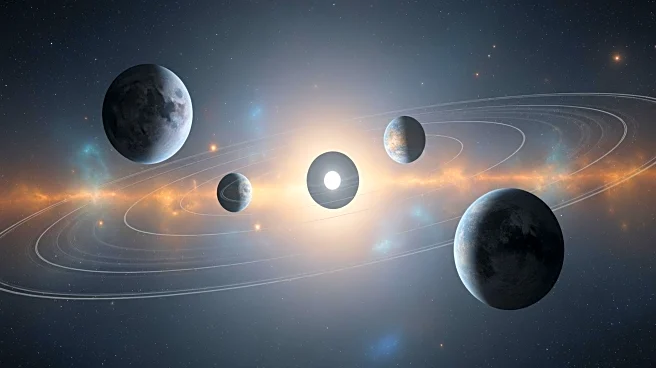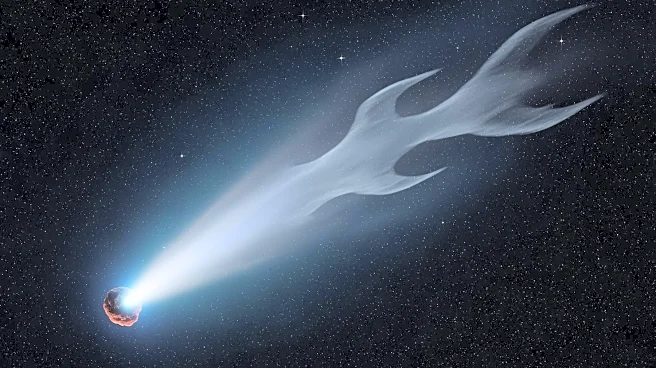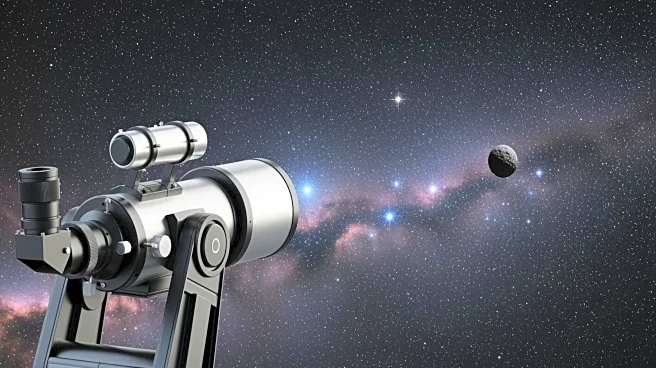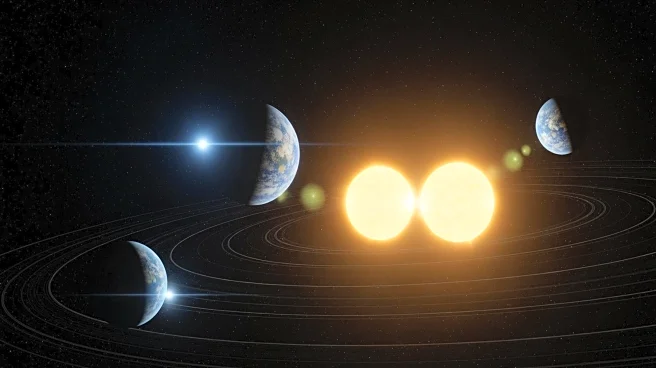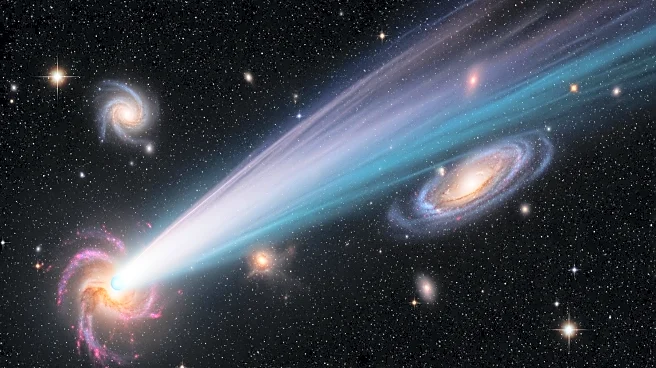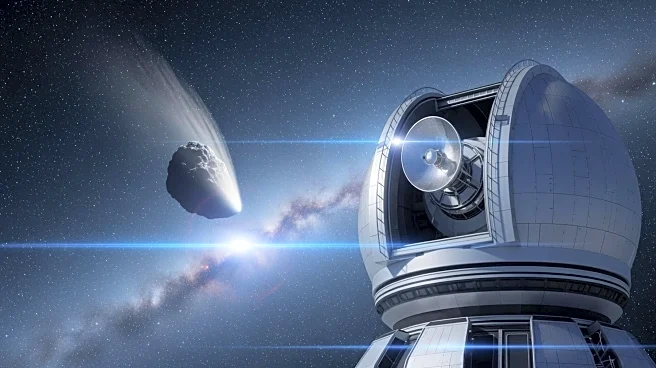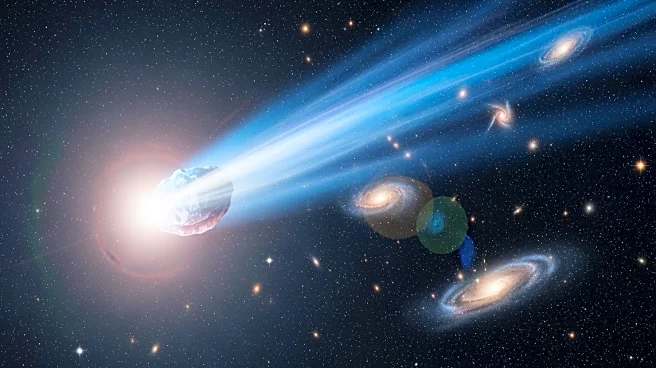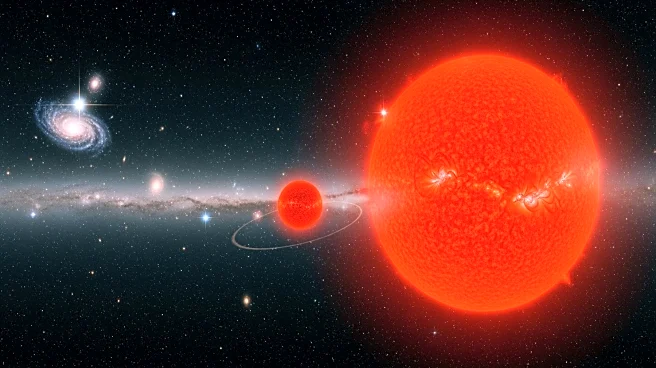What's Happening?
An international team of scientists has discovered a unique planetary system within the binary star system TOI-2267, located approximately 190 light-years from Earth. This system includes three Earth-sized planets, marking the first known instance of transiting
planets around both stars in a binary system. The discovery, published in Astronomy & Astrophysics, challenges existing theories about planet formation in such dynamically unstable environments. The planets were identified using NASA's TESS space telescope, with further confirmation from ground-based observatories like SPECULOOS and TRAPPIST. This finding provides a new perspective on how planets can form and remain stable in double-star systems, which were previously thought to be too unstable for complex planetary structures.
Why It's Important?
The discovery of this three-planet system in a binary star environment is significant as it challenges long-standing theories about planetary formation and stability. It suggests that planets can form and survive in conditions previously deemed too unstable, potentially expanding the understanding of planetary systems in the galaxy. This finding could influence future research and exploration, as it opens new avenues for studying planet formation in complex environments. The ability to detect and study such systems also highlights the effectiveness of combining space-based and ground-based observational technologies, pushing the boundaries of exoplanetary science.
What's Next?
The discovery of the TOI-2267 system paves the way for further research using advanced instruments like the James Webb Space Telescope and next-generation ground-based telescopes. These tools will allow scientists to measure the masses, densities, and possibly the atmospheric compositions of these planets, providing deeper insights into their characteristics and formation processes. This research could lead to a better understanding of the diversity of planetary architectures and the conditions under which they can exist, potentially influencing future exoplanet exploration missions.
Beyond the Headlines
This discovery not only challenges existing theories but also serves as a natural laboratory for testing the limits of planet formation models. It underscores the potential for discovering more such systems, which could redefine the understanding of planetary dynamics and stability. The findings may also have implications for the search for life beyond Earth, as they suggest that habitable conditions could exist in more diverse environments than previously thought.
